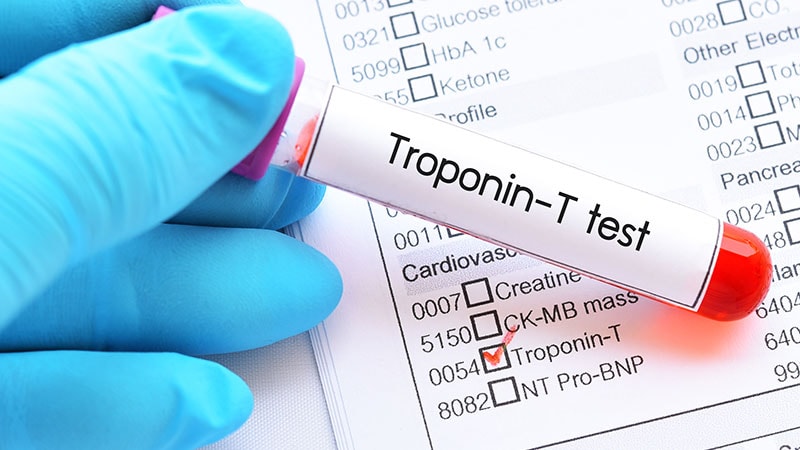High-Sensitivity Troponin Improves AMI Diagnosis in US Emergency Departments
Alapfogalmak
Implementing high-sensitivity troponin in the HEART pathway enhances acute myocardial infarction diagnosis in US emergency departments.
Kivonat
TOPLINE:
High-sensitivity troponin in the HEART pathway improves AMI diagnosis in US EDs.
METHODOLOGY:
Study conducted across 16 Kaiser Permanente Southern California hospitals.
Analyzed data of 17,384 adult patients with chest pain.
12,440 patients underwent cTn testing, 4944 underwent hsTn testing.
hsTn group had higher AMI detection rates within 30 days.
Similar 30-day all-cause mortality rates between groups.
Higher AMI diagnosis rates in hsTn group in the ED.
Higher AMI diagnosis rates in cTn group within 30 days post-ED visit.
Lower rates of admission, stress testing, and revascularization in hsTn group.
SOURCE:
Study published in JAMA Network Open by Mackensie Yore, MD, MS.
LIMITATIONS:
Limited to an integrated healthcare system.
Conducted during the COVID-19 pandemic with restricted follow-up.
DISCLOSURES:
Study supported by NIH grant, authors received grants or fees from various sources.
High-Sensitivity Troponin Offers AMI Diagnostic Edge
Statisztikák
The rate of AMI detection within 30 days was significantly higher in the hsTn vs cTn group (5.8% vs 4.4%; P <.001).
In the ED, AMI diagnosis rates were significantly higher in the hsTn vs cTn group (4.6% vs 2.0%; P <.001).
Within 30 days after the index ED visit, AMI diagnosis rates were significantly higher in the cTn vs hsTn group (2.4% vs 1.2%; P < .001).
Rates of admission, stress testing within 7 days, and coronary revascularization within 30 days were significantly lower in the hsTn vs cTn group (all P <.001).
Idézetek
"An hsTn algorithm may improve the ED evaluation of AMI, both catching AMI earlier and mitigating unnecessary admission and advanced testing."
Főbb Kivonatok
by Drishti Agar... : www.medscape.com 12-29-2023
https://www.medscape.com/viewarticle/high-sensitivity-troponin-offers-ami-diagnostic-edge-2023a1000wxw
Mélyebb kérdések
How can the findings of this study impact the standard protocols for AMI diagnosis in emergency departments?
The findings of this study suggest that implementing the high-sensitivity troponin (hsTn)-based HEART pathway in emergency departments can improve acute myocardial infarction (AMI) diagnosis. The study showed that using hsTn led to a higher rate of AMI detection within 30 days compared to conventional troponin (cTn). This indicates that incorporating hsTn testing into standard protocols for AMI diagnosis could potentially enhance the accuracy and timeliness of AMI detection in emergency departments. By catching AMI earlier and reducing unnecessary admissions and advanced testing, the use of hsTn algorithms may streamline the evaluation process for AMI in ED settings.
What potential challenges or criticisms could arise from implementing high-sensitivity troponin in AMI diagnosis?
While the use of high-sensitivity troponin in AMI diagnosis offers several advantages, there are potential challenges and criticisms that could arise from its implementation. One concern is the increased sensitivity of hsTn tests, which may lead to higher rates of false positives and unnecessary interventions. This could result in additional healthcare costs and patient anxiety. Moreover, the adoption of hsTn testing may require significant resources and training for healthcare providers to interpret the results accurately. There could also be issues related to standardization of hsTn assays across different healthcare settings, which may impact the consistency and reliability of test results. Additionally, the potential overdiagnosis of AMI with hsTn testing could lead to overtreatment and unnecessary procedures, raising ethical considerations in clinical practice.
How might the use of high-sensitivity troponin in AMI diagnosis influence other areas of emergency medicine research?
The use of high-sensitivity troponin in AMI diagnosis could have broader implications for emergency medicine research beyond AMI detection. By improving the accuracy and efficiency of diagnosing AMI, hsTn testing may lead to advancements in risk stratification, treatment strategies, and patient outcomes in emergency departments. This could stimulate further research into optimizing the use of hsTn assays for other cardiovascular conditions and non-cardiac emergencies. Additionally, the implementation of hsTn testing may prompt investigations into the development of novel algorithms and decision-making tools for various acute conditions seen in emergency settings. The integration of hsTn testing in emergency medicine research could also foster collaborations between emergency physicians, cardiologists, and researchers to enhance the overall quality of care and outcomes for patients presenting with acute chest pain and other related symptoms.
0
